#cold space
Explore tagged Tumblr posts
Text
Katoberfest Day 8: Mission Fic
(Or: the fic I had originally planned to post on Friday but I only finished it yesterday)

The Taste of Her Lips
Kat and Mirror Philippa Georgiou travel to Earth for a meeting with Starfleet Command. Kat misses Prime Philippa who used to be her wife. When a problem occurs, they are forced to huddle together for warmth until they are rescued. Add whiskey and you get a recipe for some kind of disaster...
Written for the admiral challenge with the prompts: Mission Fic, Cold Space, Cuddling for Warmth, First Kiss, Only One Bed
Read the fanfic on ao3
#katoberfest2023#katrina cornwell#philippa georgiou#mirror philippa georgiou#katrina cornwell x philippa georgiou#katrina cornwell x mirror philippa georgiou#mission fic#cold space#cuddling for warmth#first kiss#only one bed#star trek discovery#st disco#fanfic#ao3#eli creates
11 notes
·
View notes
Text

About The Book
From Academy Award-nominee Samuel L. Jackson and Eric Calderon, the team that brought you the Emmy-award-winning, best-selling AFRO SAMURAI comes their next original series-COLD SPACE.
From Academy Award-nominee Samuel L. Jackson and Eric Calderon, the team that brought you the Emmy-award-winning, best-selling AFRO SAMURAI comes their next original series-COLD SPACE. When an on-the-run outlaw crash-lands on a hostile planet on the brink of civil war, he finds himself in the crossfire between two warring factions. But in chaos lies opportunity-because where there's money to be made. A hard-boiled sci-fi action-adventure with covers by Eisner Award-winning artist Dave Johnson and IRREDEEMABLE cover artist Jeffrey Spokes!
0 notes
Text
I'm officially stupid.
I just realized that "space heaters" are called "space heaters" because they heat an empty (often cold) space.
And NOT because the people who made them thought the image of a heating machine floating in the vast galaxy of space, was funny.
LIKE I DID!
#space heaters#space#funny#heat#heater#rambles#im stupid#im an idiot#hepl#cold space#galaxy#little space
1 note
·
View note
Text

The Last Full Moon of the Year l maco.wolf
#moon#December#cold moon#space#full moon#universe#astrophotography#astronomy#stars#galaxy#solar system#planets#night#sky
2K notes
·
View notes
Text
DC X DP PROMPT #4
Danny was one of the people hired to design/build the Watchtower. He got attached to it during this time and the space station is now considered as a part of his haunt.
This is the JLD's first time on the Watchtower, they IMMEDIATLY know what's up.
LJD: did you take a supernatural entities property or something?
LD: what? No! The lights are just like that :)
Danny, still employed on the Watchtower: Space go brrr
#dc x dp#dpxdc#im goiny crazy#im actually cooking#danny MADE the watchtower#thats HIS place now#JLD rockin up being like: whos crib is it really?#poor JL being liek: wdym :( we got this for us :(((#JL: i mean the light flicker and it get weird cold soemtimes but its space man :(#dannt lives on the Watchtower via employment
5K notes
·
View notes
Text
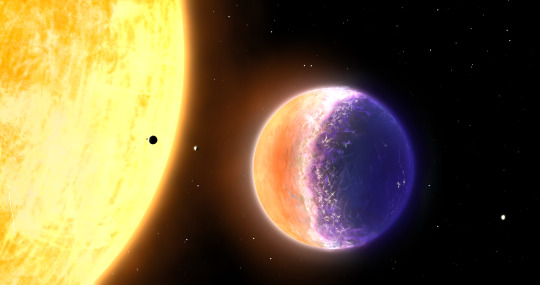
good news I found more outer space
#a tidally locked planet is one that doesn't rotate in relation to its sun. so one half receives constant sunlight#a thin strip of twilight would circle the planet and could sustain temperature equilibrium between permanent heat and cold#this twilight band could potentially sustain permanent settlements. they'd just have to deal with weather from the temp differential#space stuff#sketches#not aurora
1K notes
·
View notes
Text

December Full Cold Moon © astronycc
#astrophotography#space#galaxy#stars#universe#astronomy#cosmos#planet#solar system#moon#full moon#cold moon
1K notes
·
View notes
Text
i love being cold. even if it clearly doesnt mean im super small and frail it feels validating. like an empty stomach except i need a blanket.
#4nor3xia#3d blog#3d diary#diary#light as a feather#ed shitpost#ed safe space#disordered eating mention#tw ed ana#tw 3d vent#tw ana rant#3d thoughts#4n@diary#4norexla#tw ana bløg#a4a diary#cold#I love being cold#alana champion#lily rose depp#kate moss#heroine chic#it girl#lana is god#lana del rey#ldr#lana del ray aka lizzy grant#femcel#my girlblog#girlblogging
1K notes
·
View notes
Text
A Tour of Cosmic Temperatures
We often think of space as “cold,” but its temperature can vary enormously depending on where you visit. If the difference between summer and winter on Earth feels extreme, imagine the range of temperatures between the coldest and hottest places in the universe — it’s trillions of degrees! So let’s take a tour of cosmic temperatures … from the coldest spots to the hottest temperatures yet achieved.
First, a little vocabulary: Astronomers use the Kelvin temperature scale, which is represented by the symbol K. Going up by 1 K is the same as going up 1°C, but the scale begins at 0 K, or -273°C, which is also called absolute zero. This is the temperature where the atoms in stuff stop moving. We’ll measure our temperatures in this tour in kelvins, but also convert them to make them more familiar!
We’ll start on the chilly end of the scale with our CAL (Cold Atom Lab) on the International Space Station, which can chill atoms to within one ten billionth of a degree above 0 K, just a fraction above absolute zero.

Credit: NASA's Goddard Space Flight Center/Scott Wiessinger
Just slightly warmer is the Resolve sensor inside XRISM, pronounced “crism,” short for the X-ray Imaging and Spectroscopy Mission. This is an international collaboration led by JAXA (Japan Aerospace Exploration Agency) with NASA and ESA (European Space Agency). Resolve operates at one twentieth of a degree above 0 K. Why? To measure the heat from individual X-rays striking its 36 pixels!

Credit: NASA's Goddard Space Flight Center/Scott Wiessinger
Resolve and CAL are both colder than the Boomerang Nebula, the coldest known region in the cosmos at just 1 K! This cloud of dust and gas left over from a Sun-like star is about 5,000 light-years from Earth. Scientists are studying why it’s colder than the natural background temperature of deep space.
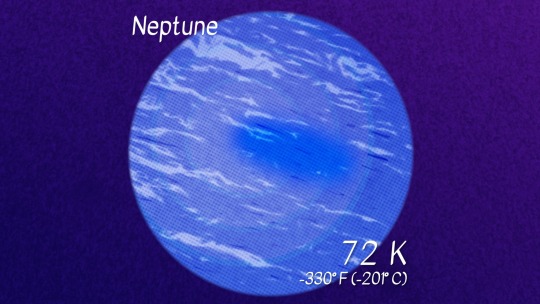
Credit: NASA's Goddard Space Flight Center/Scott Wiessinger
Let’s talk about some temperatures closer to home. Icy gas giant Neptune is the coldest major planet. It has an average temperature of 72 K at the height in its atmosphere where the pressure is equivalent to sea level on Earth. Explore how that compares to other objects in our solar system!

Credit: NASA's Goddard Space Flight Center/Scott Wiessinger
How about Earth? According to NOAA, Death Valley set the world’s surface air temperature record on July 10, 1913. This record of 330 K has yet to be broken — but recent heat waves have come close. (If you’re curious about the coldest temperature measured on Earth, that’d be 183.95 K (-128.6°F or -89.2°C) at Vostok Station, Antarctica, on July 21, 1983.)
We monitor Earth's global average temperature to understand how our planet is changing due to human activities. Last year, 2023, was the warmest year on our record, which stretches back to 1880.
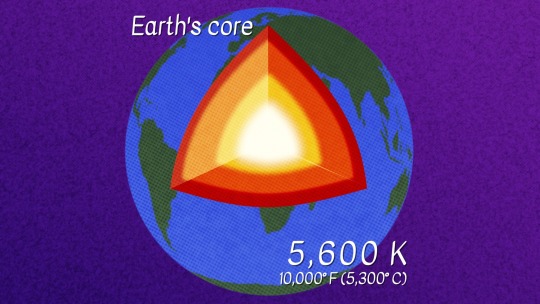
Credit: NASA's Goddard Space Flight Center/Scott Wiessinger
The inside of our planet is even hotter. Earth’s inner core is a solid sphere made of iron and nickel that’s about 759 miles (1,221 kilometers) in radius. It reaches temperatures up to 5,600 K.

Credit: NASA's Goddard Space Flight Center/Scott Wiessinger
We might assume stars would be much hotter than our planet, but the surface of Rigel is only about twice the temperature of Earth’s core at 11,000 K. Rigel is a young, blue star in the constellation Orion, and one of the brightest stars in our night sky.
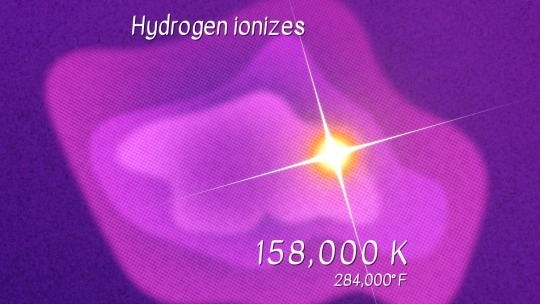
Credit: NASA's Goddard Space Flight Center/Scott Wiessinger
We study temperatures on large and small scales. The electrons in hydrogen, the most abundant element in the universe, can be stripped away from their atoms in a process called ionization at a temperature around 158,000 K. When these electrons join back up with ionized atoms, light is produced. Ionization is what makes some clouds of gas and dust, like the Orion Nebula, glow.

Credit: NASA's Goddard Space Flight Center/Scott Wiessinger
We already talked about the temperature on a star’s surface, but the material surrounding a star gets much, much hotter! Our Sun’s surface is about 5,800 K (10,000°F or 5,500°C), but the outermost layer of the solar atmosphere, called the corona, can reach millions of kelvins.
Our Parker Solar Probe became the first spacecraft to fly through the corona in 2021, helping us answer questions like why it is so much hotter than the Sun's surface. This is one of the mysteries of the Sun that solar scientists have been trying to figure out for years.
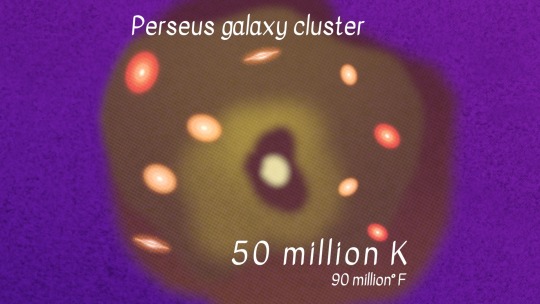
Credit: NASA's Goddard Space Flight Center/Scott Wiessinger
Looking for a hotter spot? Located about 240 million light-years away, the Perseus galaxy cluster contains thousands of galaxies. It’s surrounded by a vast cloud of gas heated up to tens of millions of kelvins that glows in X-ray light. Our telescopes found a giant wave rolling through this cluster’s hot gas, likely due to a smaller cluster grazing it billions of years ago.

Credit: NASA's Goddard Space Flight Center/Scott Wiessinger
Now things are really starting to heat up! When massive stars — ones with eight times the mass of our Sun or more — run out of fuel, they put on a show. On their way to becoming black holes or neutron stars, these stars will shed their outer layers in a supernova explosion. These layers can reach temperatures of 300 million K!

Credit: NASA's Goddard Space Flight Center/Jeremy Schnittman
We couldn’t explore cosmic temperatures without talking about black holes. When stuff gets too close to a black hole, it can become part of a hot, orbiting debris disk with a conical corona swirling above it. As the material churns, it heats up and emits light, making it glow. This hot environment, which can reach temperatures of a billion kelvins, helps us find and study black holes even though they don’t emit light themselves.
JAXA’s XRISM telescope, which we mentioned at the start of our tour, uses its supercool Resolve detector to explore the scorching conditions around these intriguing, extreme objects.

Credit: NASA's Goddard Space Flight Center/CI Lab
Our universe’s origins are even hotter. Just one second after the big bang, our tiny, baby universe consisted of an extremely hot — around 10 billion K — “soup” of light and particles. It had to cool for a few minutes before the first elements could form. The oldest light we can see, the cosmic microwave background, is from about 380,000 years after the big bang, and shows us the heat left over from these earlier moments.

Credit: NASA's Goddard Space Flight Center/Scott Wiessinger
We’ve ventured far in distance and time … but the final spot on our temperature adventure is back on Earth! Scientists use the Large Hadron Collider at CERN to smash teensy particles together at superspeeds to simulate the conditions of the early universe. In 2012, they generated a plasma that was over 5 trillion K, setting a world record for the highest human-made temperature.
Want this tour as a poster? You can download it here in a vertical or horizontal version!
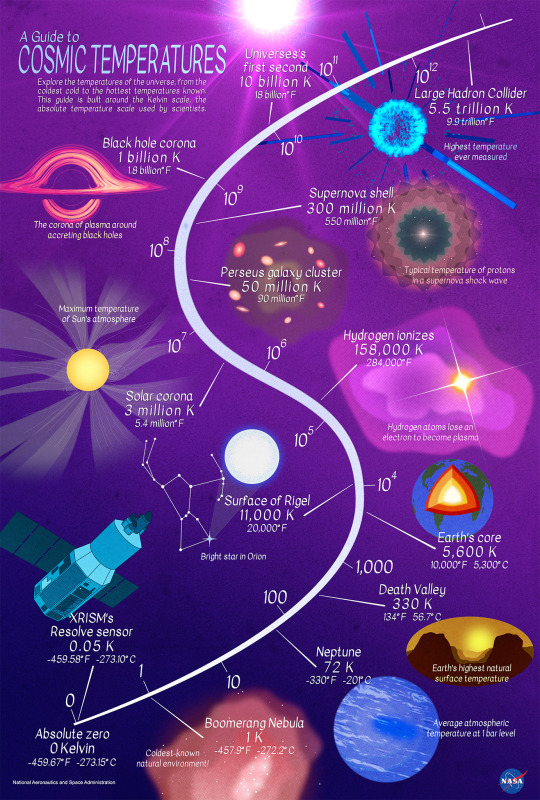
Credit: NASA's Goddard Space Flight Center/Scott Wiessinger
Explore the wonderful and weird cosmos with NASA Universe on X, Facebook, and Instagram. And make sure to follow us on Tumblr for your regular dose of space!
2K notes
·
View notes
Text
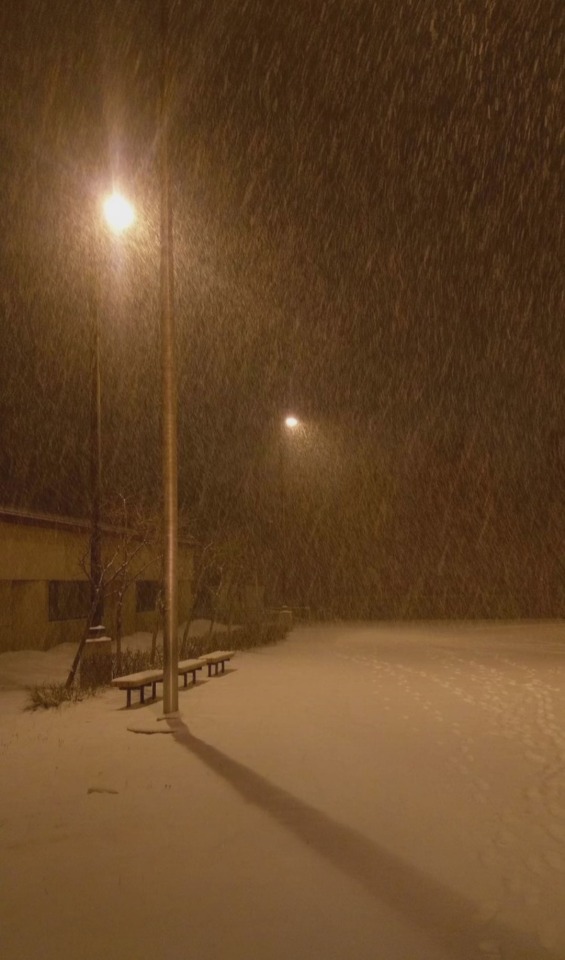
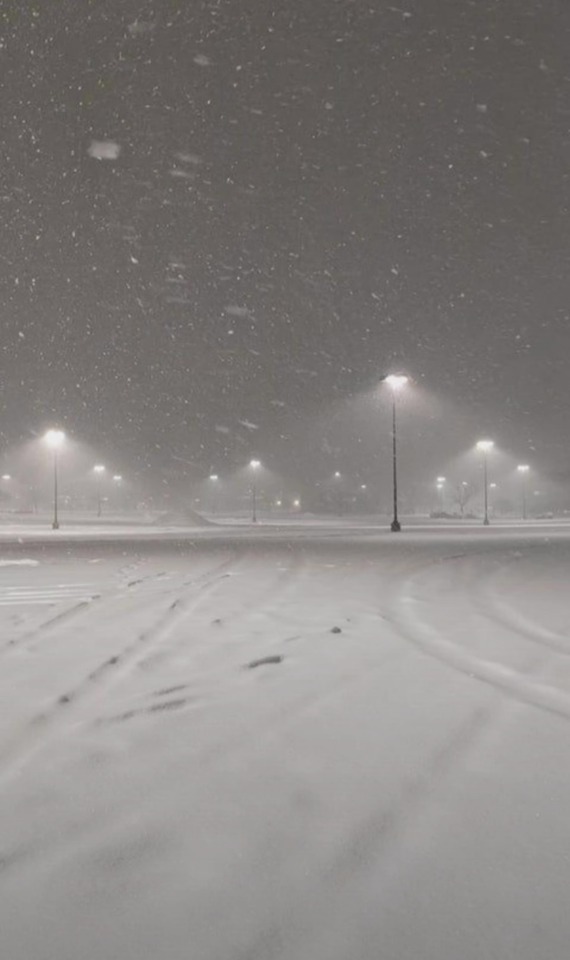


Feels like home
#winter#snow#ice#cold#fog#dusk#night#dark#street lights#dream#dreams#dreaming#dream core#dreamcore#weird core#weirdcore#liminal spaces
10K notes
·
View notes
Text



chat how are we feeling
#i am not feelign good personally. so many emotions . oh my fucking god i love sanford so much i have to die#(im being dramatic btw. so happy abt this episode but its currently manifestign as me staring into space like a detective on a cold case)#oh my god. oh my GOD#madness combat#madness combat 12#madness combat 12 spoilers#sanford madness combat#mc sanford#deimos madness combat#mc deimos#sanmos#I STILL CANNOT BELIEVE KRINKELS SAID “LOVE WINS” AFTER ALL THAT. IM GOING FUCKGIN INSANE OVER THAT. MY FUCKIGN GOD. CHRIST#my art#simmons likes to draw
1K notes
·
View notes
Text




Book 2 au: and there was only one bed!! :00
Because of course I just had to do this trope
This is the first and last time they decide to sleep in an inn and they have an unspoken agreement to pretend this never happened
#zutara#zuko#katara#atla#book 2 au#my art#i like to think katara is pretty clingy when sleeping cause she's from the south pole#and she's probably really used to cuddling in order to share body heat to get through the really cold nights#ofc she'd usually be cuddling up with her family and not the banished prince of the fire nation who's also pretending to be her husband#zuko on the other hand is not used to sharing a bed with anyone much less sharing his personal space and cuddling with anyone#but anyways zuko would rather die than admit he didn't mind it as much as he thought he would and that he slept comfortably well that night#to the anon that was just asking about this au this one's for you lolol#i told you i was just about to post something and here it is
1K notes
·
View notes
Text
Eepy codywan sketches anyone?

#chronically cold obi-wan and his space heater boyfriend#that hoodie is 100% stolen and no he wont be giving it back#but he will drop it dramatically on the floor for cody to steal back#theyre so silly and i love them#they deserve cuddles#codywan#codywan surfer au#but its impossible to tell so like...#codywan smooch#my art#obi wan kenobi#commander cody#star wars#star wars fanart#digital art#fanart#sketch#wip#kiss
2K notes
·
View notes
Text

Full Cold Moon 2024 l adamkylejackson
#sky#space#astrophotography#astronomy#stars#moon#full moon#cold moon#galaxy#universe#planets#solar system#night#december
939 notes
·
View notes
Text






It was you who held my hand first, made me your gege, now that you think you're grown up...does that mean you're ready to let go of my hand?
#love and deepspace#恋与深空#love and deep space#xia yizhou#caleb#夏以昼#dailygaming#dailyvideogames#gamingnetwork#videogamepoc#gamingedit#3d animation#video games#*5#otome#otome game#does this mean we chose him first we chose our gege🥺😭😭#the contrast between these two scenes one is warm lighting and the other is cold thunderstorm but hes holding on regardless
421 notes
·
View notes
Text

forbidden jay (he’s lost)
#ninjago#jay walker#ninjago dragons rising#jay ninjago#jay walker ninjago#the words say Wanted . it’s a wanted poster#Sorry i Just needed to fill up The space… …#🤒#i Love you jay Walker#lego ninjago#spoilers . maybe#ninjago spoilers#me when i have 300 hcs for jay and Draw none of Them#you’ll have to Pry rhose pins from my cold dead Hands .
731 notes
·
View notes